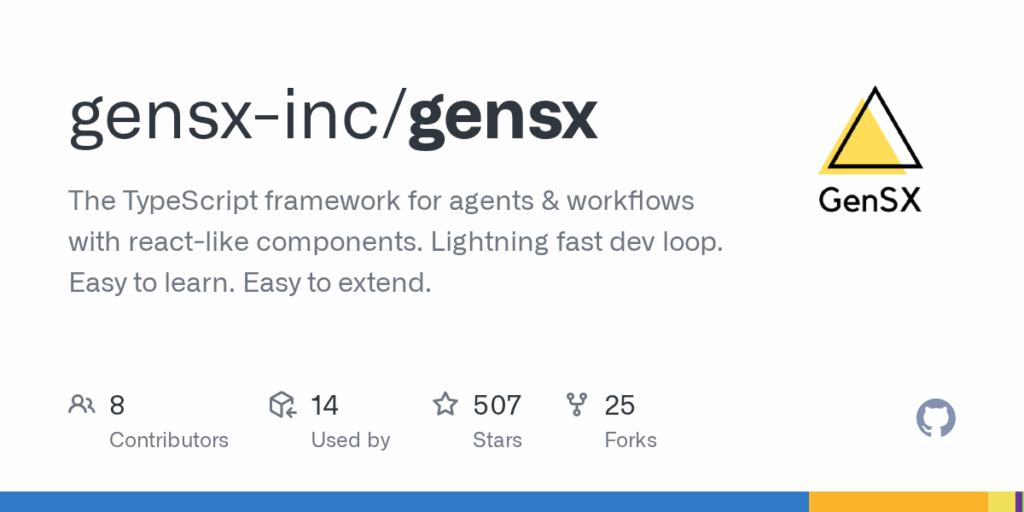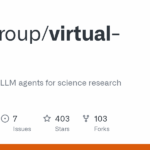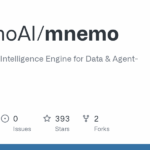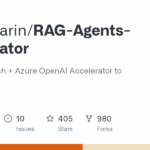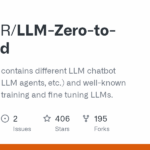gensx
Basic Information
GenSX is a TypeScript framework and workflow engine for building complex LLM applications, agents, chatbots, and long-running workflows. It provides a programming model where workflow components are pure TypeScript functions that are easily composed to express tasks and agent behaviors. The repo hosts the core framework, published packages, example applications, and website resources intended for developers who want to build stateful, testable, and type-safe AI-driven workflows. GenSX emphasizes natural composition of components rather than graph-based DSLs, and it supports scaling from simple functions to advanced agent patterns such as reflection and long-running processes. The project also includes examples illustrating common use cases like RAG, blog writing, research pipelines, chat memory, and integrations with providers like OpenAI and Vercel AI.

